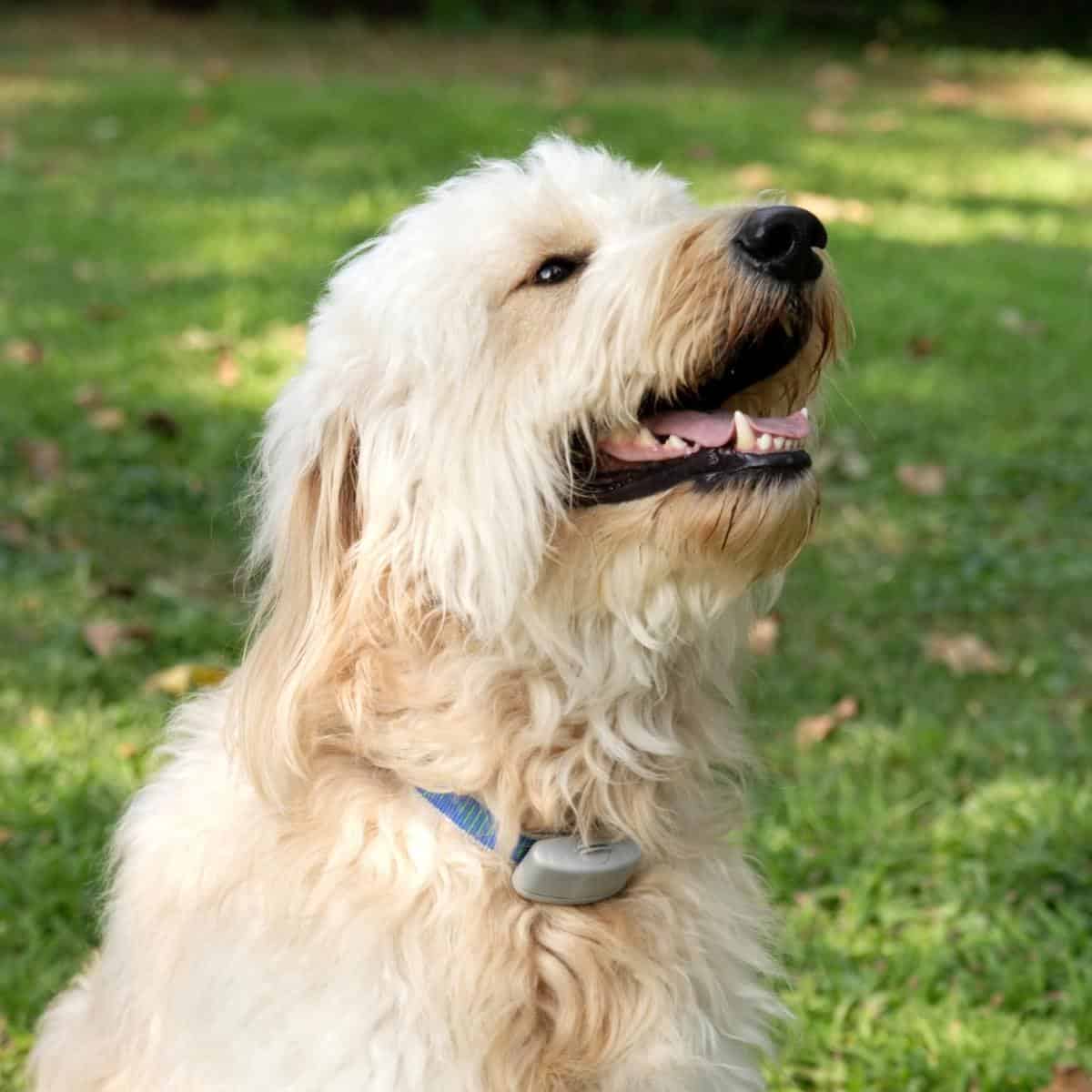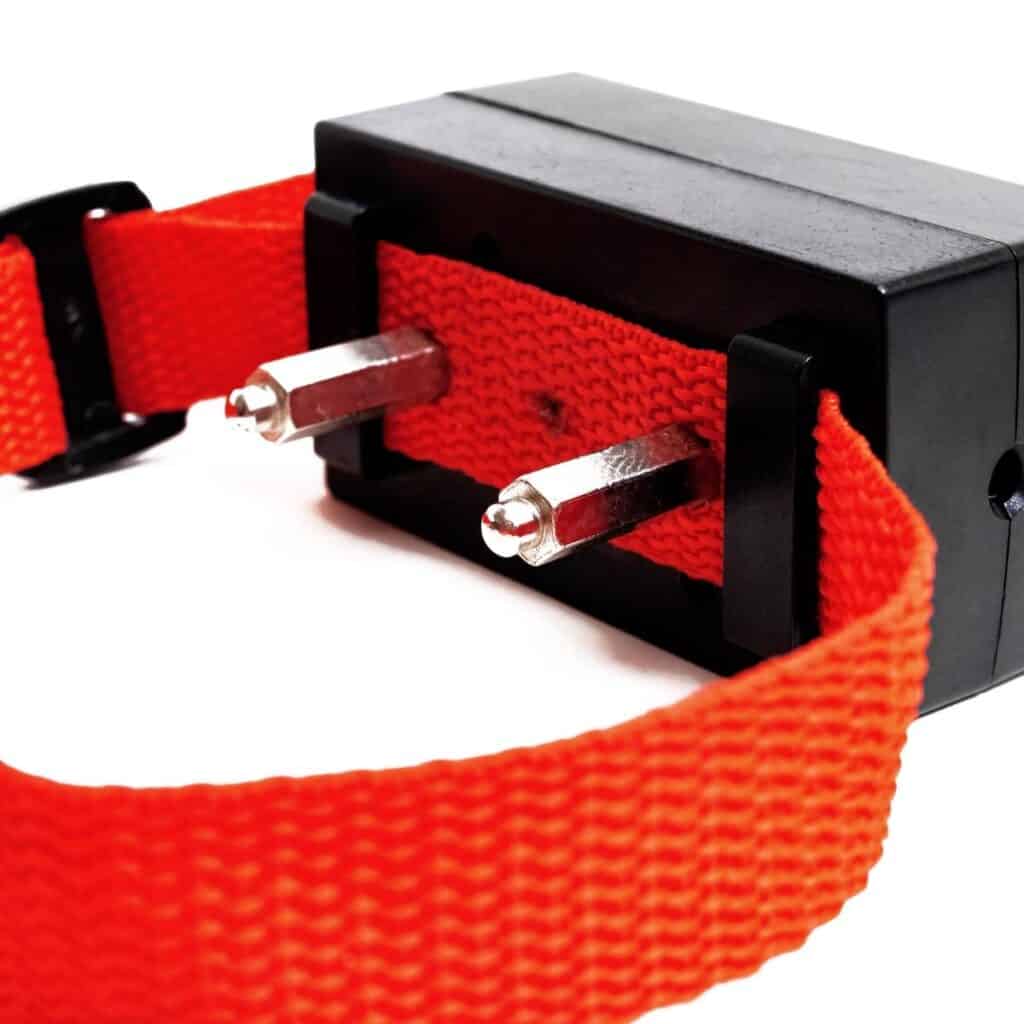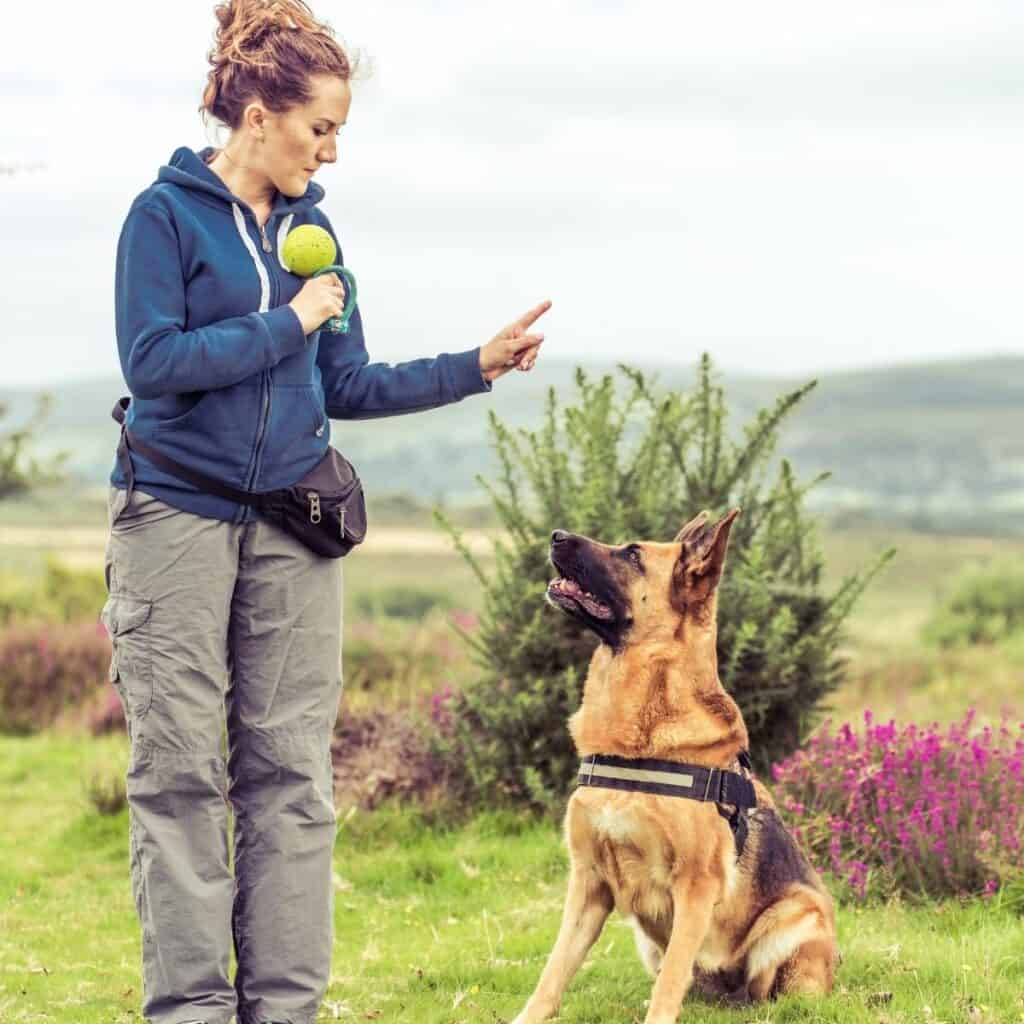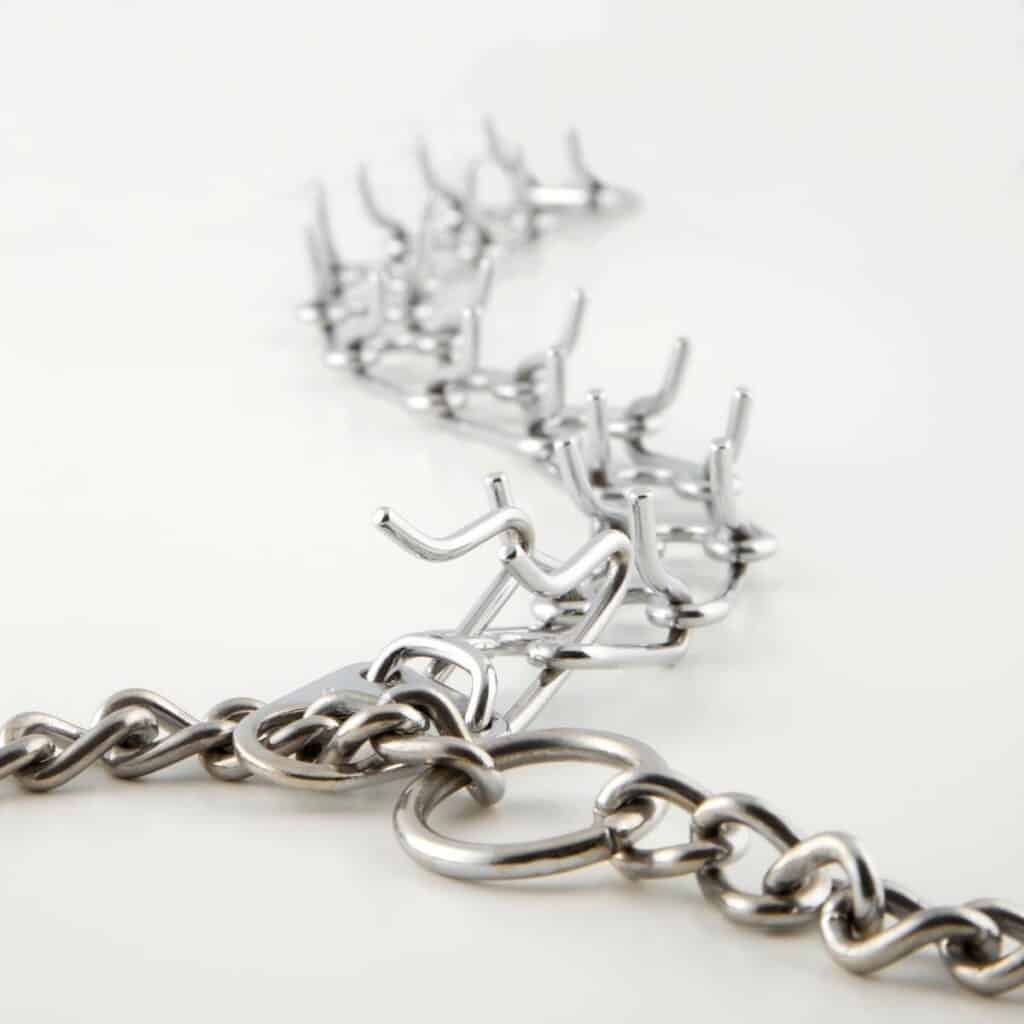What is an E Collar for Dogs? The Good, Bad, and Ugly.
Learn more about E-collars for dogs, if they are safe, humane, recommended by vets, and how to use them for training.
E-collars aren’t favored by everyone but have been shown to be effective when training a dog. However, we should warn you that it takes time and practice to master training with aids like this one. You will want to be well versus using these because sometimes they can do more harm than help.

What are E-Collars for Dogs?
E-collars for dogs are electric training aids. Other names you may recognize include zap collars, shock collars, or remote training collars. These tools consist of wireless remotes which dog owners carry and wireless receivers that dogs wear close to their necks.
When dog owners want to teach their pups right from wrong they may choose a shock collar. Feedback from the transmitter sends signals that deliver through the collar on their neck.
E-collars vs. Shock Collars: What’s the Difference?
The canine shock collar started coming into play during the 1960s and was mainly used with hunting dogs. The first model was larger and it had one mode, which was high–delivering
During the 1970s, the batteries and circuits got better, the unit got smaller, and different intensities were introduced. Owners could change out the plugs in the collars, but most found the shock was too much or not enough. There was also the problem of the plugs falling out during hunting.
With the 80s, came the audible features.
More advancements came in the 1990s, the best being that you could instantaneously change the intensity from a remote. There were also fixes for battery life, range, and waterproofing.
After that, it led to the modern e-collar that we know today.
So what’s the difference between shock collars and e-collars? Nothing. Both deliver electrical impulses (whether it’s high or low). Most like the term e-collar because it sounds more human than actually shocking.
Some models may not have all of the features such as audible tones and vibrations.

How do E-Collars for dogs work?
An E-collar uses something referred to as electric stimulation. These are a sensation of pulsing waves that can vary in intensity based on the settings the owner chooses to use.
Some E-collars have GPS settings so that you can track your dog as well as his movement. Others put out vibrations versus electric pulses.
In training, E-collars are really used as a negative reinforcement tactic. For example, when you are potty training your dog, we recommend keeping it positive with rewards like treats and toys.
As a human, if you are caught going over the speed limit you will get a ticket. Negative reinforcement.
Basically, negative reinforcement is training your dog in the midst of them doing something bad while holding down the transmitter (while giving a command), releasing when they have stopped the behavior, then praising them.
Pros of E-collars for Dogs
E-collars can be effective training tools. An E-collar is just like another way to communicate with dogs. You should never think of shock collar training as a shortcut or as the last straw type of thing.
This is a perfect training tool when correcting their behavior with timing, like in the moment. Things just happen so fast sometimes, and your reaction is much slower. For example, your dog likes to chase cars. When they get it in their mind to chase a car, you don’t have time to go through all of the training commands, you have to react then. Not to mention in this case an e-collar can be used for safety with your pup.
When they are acting out in a split second or if you have moved on to training off the leash, E-collars work great, as long as you use them correctly.
Before you start shock training, talk to a trainer. You really need to know the ins and out of using the transmitter. If you aren’t familiar, sometimes these collars can cause more harm than help, including worse behavior.
Intensity can be set very low and you can use just the sounds and vibrations versus the electrical component.

Cons of E-Collars for dogs
Since the collars are designed to help dogs to associate the shock with negative behavior, it’s important for you to understand the full picture.
One who’s unfamiliar with this type of training thinks things are simple. Dog does something good, he gets a treat. The dog chooses to do something bad, he gets a shock. While it may seem black and white, it’s not.
Dogs get confused about what is right and wrong behavior. They also tend to generalize things and what you want them to understand doesn’t happen.
Here’s an example. Your dog constantly tips over the trash can, which is why you got the collar to start with. The next time he spills the trash, you shock him. He doesn’t know that the bad behavior is the trash. He could associate it with being in the kitchen, or because other people were around.
So it’s really frustrating for you and the dog but often leads to more anxiety in the pup.
Another issue with shock training is that most owners are at their wit’s end by the type they put the collar on the dog. The goal at this point is to teach them punishment, which is also where the controversial issue lies.
If the intensity is too high, your dog may even start associating pain with you or your family, which in turn, leads to more disobedience and maybe even aggressiveness.
E-Collars can therefore be effective in a life and death situation. Experts recommend training your dogs using positive reinforcement such that when your dog does the desired behavior, he is rewarded.
We believe that E-collar training can be effective but only when used appropriately and at the discretion of a professional.

Can E-Collars Cause Seizures?
There is very little research to support this claim one way or the other. Top Dog Tips states, “On average, the strength of an electric shock or “stimuli” from these collars can be anywhere from 7 milliamps (or 0.007 amps) to 1250 milliamps (or 1.25 amps)”.
Manufacturers of e-collars are pretty quiet when it comes to disclosing the milliamperage and voltage levels of “stimulation. That being said, Medical News Today states that in humans, it takes 10-20 milliamps for “possible seizure at the contact point”.
E-collar Considerations
Professional help
Before you DIY your dog training, it’s best to talk with someone in the training field and your veterinarian. They can give you tips and suggestions directly related to your dog’s breed and help you get familiar with this type of training device.
Research
When purchasing an e-collar you want to make sure it’s high quality and has good reviews that you can checkout. Obviously, not all models are the same and can vary from different sellers especially if you are looking on marketplaces such as Amazon and eBay.
Features
The more settings the e-collars have, the gentler it can be for your pup. There are devices that have vibrate, shock, and beeping functions. Sometimes you don’t even have to use the shock feature because you can condition them with the beep and vibration.
Dog Age
Most experts and manufacturers recommend that e-collar training should wait until the pooch is at least six months old. Dogs who are younger are just not ready for this type of training.
Start slow
For the first few weeks don’t use the transmitter once the collar is on. Make sure it’s comfortable for your dog and maybe even give him a few treats. Because this is something new, you don’t want your dog to automatically assume it’s bad. Not to mention, in the beginning, they are not going to know what the device is for or understand the action that they shouldn’t be doing. Just remember to have patience.

More Commons FAQs
Yes. Dogs can sleep with an e-collar on. In fact, the more they wear the collar the quicker they will get used to it.
Dog owners should wait to start e-collar training until puppies are at least six months old.
It really depends on the veterinarian’s opinion. This source says that they do not advise shock training. There have been studies by the Frontiers in Veterinary Science, who said that this method was effective, but not as effective as positive reinforcement training.
Also, your vet’s decision and opinion could be based upon your dog’s personal medical records.
Pretty much. Most just use these terms interchangeably, and features may vary across devices.
This really depends on what your stance is on the humanity of using shock training. Some dogs never even need the shock because they are conditioned by the sound and vibrations. If the vibration intensity is set high enough, it will cause enough discomfort for the bad behavior to stop (over time through training).
Smaller dogs and ones that are more sensitive may benefit more from a vibration collar, especially if they are a little skittish by nature.

Which Is Better E-Collar Or Prong Collar?
Prong collars are better if you are training with a leash. The leash hooks to the collar and induces pressure when it’s pulled.
If you are doing off-leash training, some type of e-collar would be better because it’s “cordless” and works by remote.
However, you should only be training on one concept at a time, so choose one and stick with it.
How Tight Should A Dog E Collar Be?
It should be tight enough so it doesn’t slide too much and the dog can’t take it off, but also loose enough where you can fit two fingers under it without it being uncomfortable for you.
Do E-Collars Cause Anxiety In Dogs?
This is another issue where opinions are going to vary from person to person. Our take is that training in general causes anxiety for dogs, just as if you were going through a training program. Dog owners who are in contact with professional trainers can get the best tips from them to help your dog as much as possible.





